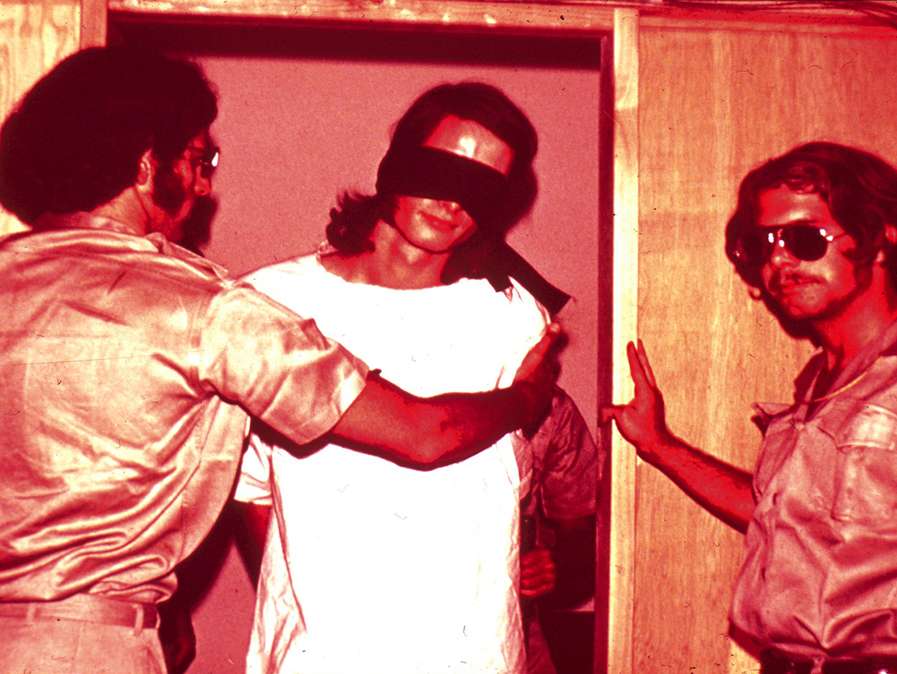In the summer of 2018, many Russian media reported that one of the most famous experiments in the history of psychology turned out to be staged. We checked whether this is actually true.
In 2018, the largest Russian-language media released materials stating that the Stanford prison experiment, conducted in the early 1970s, was exposed. Publications with similar headlines and links to American colleagues appeared, in particular, on the websites “Gazeta.ru", "RIA Novosti" And "Kommersant". At the same time, the authors of different publications assessed the importance of the new data about the experiment differently: some called the original study “fake,” others called it “staged,” while others only reported accusations of fraud.
The study, which later became known as the Stanford Prison Experiment, took place in the summer of 1971. Psychologist Philip Zimbardo invited 24 volunteers using a newspaper advertisement and divided the young men who came into two equal groups. In a mock prison set up at Stanford University, one group was supposed to become guards, the other - prisoners. The guards were given uniforms, batons and mirrored glasses, behind which the eyes are not visible. The prisoners, in turn, upon entering the prison, were publicly dressed in uniforms with numbers sewn on, which were henceforth used instead of names. Psychologists planned to observe for two weeks how the subjects would behave in accordance with the assigned roles. Soon, guards began to use physical and psychological violence against prisoners. The situation began to get out of control so quickly that the experiment was stopped early on the sixth day.
The results of the Stanford experiment began to be written not only in scientific journals, but also in the world's largest publications. Zimbardo, who organized the study, came to the conclusion that the real cause of violence is not a person’s personal predisposition, but his environment. The guards began to insult and humiliate the prisoners simply because they received such an opportunity, although no one directly demanded this of them. Subsequently, Zimbardo from these positions defended one of the guards of the American prison Abu Ghraib in Iraq, where cases of torture and abuse were recorded.
Although Zimbardo’s experiment had been questioned before, 2018 became critical for the researcher’s authority. French sociologist and documentary director Thibault le Texier, followed by American journalist Ben Bloom reported, that the archives of Stanford University contain documents that refute the correctness of the study. The main discovery was the information that the guards did not independently begin to use violence against prisoners - before the start of the experiment, they were instructed that the second group of participants should experience helplessness and fear (although there was no direct talk about the use of violence).
At the end of 2018, the renewed discussion interested the American popularizer of science Michael Stevens. In his documentary movie from the YouTube Originals series, he spoke with Bloom, who participated in the experiment as a supervisor, Dave Eshelman, psychologist Jered Bartels, and Zimbardo himself. Eshelman confirmed that the fact that they were among the test subjects was hidden from the guards: “We were assured that our job was to get results from the prisoners, because they were the ones that interested the researchers. We knew that the researchers were sitting behind the wall and filming us, we could even hear their conversations.” “If they [the initiators of the experiment] want to show that prison is bad, then I decided to be the worst guard,” Eshelman added.
One of the main complaints about the Stanford experiment was that the recruitment advertisement explicitly stated that the researchers were conducting a “psychological study of prison life.” 2007 study showedthat people who are more aggressive, authoritarian, and less prone to empathy tend to respond to such invitations. Stevens and Bartels decided to conduct a new experiment, the design of which would offset the shortcomings of Zimbardo's study. The advertisement from which participants were recruited was written neutrally, and before the experiment began, they were asked to undergo psychological testing, as a result of which only the “good” people were selected. The prison component was also eliminated. Participants in the experiment were seated in a completely dark room and asked to assemble a puzzle, while being told that the same process was happening in the next room with another group of people, although in fact there was no second room. Participants were allowed to interfere with their “rivals” by turning on a siren in their room, while allowing them to adjust the volume level. The role of these “rivals”, who had similar capabilities, was played by Stevens and Bartels. During the experiment, they did not notice any manifestations of sadistic behavior on the part of the subjects.
Stevens decided to discuss his results with the author of the Stanford prison experiment. The suggestion that the 1971 study spoke not about the propensity to use violence, but about the power of such a demand or even a hint from someone in power, did not impress Zimbardo. He insisted that the participants in the original study were not in any way conditioned to exhibit the behavior that he and his colleagues observed. Zimbardo called the study conducted by Stevens and Bartels "a demonstration that in certain cases a person's personal characteristics can dominate the situation and environment," but did not abandon his own conclusions.
The discussion about the Stanford prison experiment has been going on for half a century. There is no doubt that such a study really took place - many of its participants are still alive, to whom there is no point in lying about the events of 1971. The subject of dispute, as is often the case in science, was the methodology of the experiment and the validity of the far-reaching conclusions that Zimbardo presented to the public. Bloom’s text and subsequent publications in Russian and foreign media in 2018 simply introduced the mass audience to the doubts that the scientific community has been expressing about the Stanford experiment for a long time.
Half-truth
- https://nplus1.ru/blog/2018/06/18/stanford-uncovered
- https://youtu.be/KND_bBDE8RQ
- https://youtu.be/2MISe09ArHw
- https://www.prisonexp.org/
If you find a spelling or grammatical error, please let us know by highlighting the error text and clicking Ctrl+Enter.







